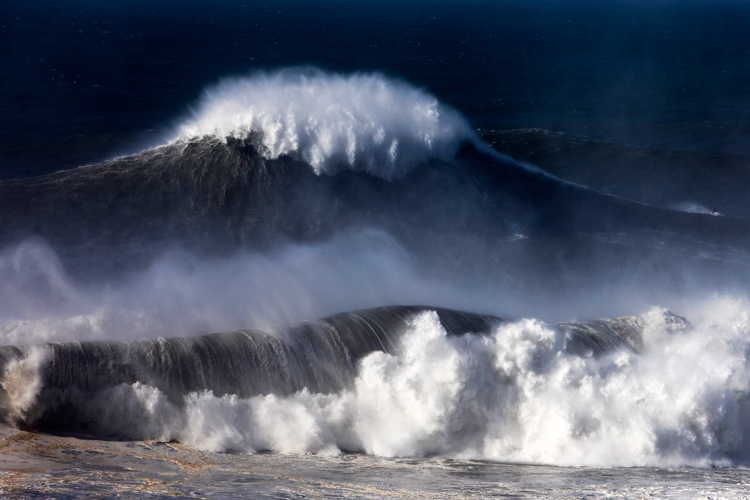What do the best and most extreme surf spots in the world have in common?
They can only be ridden by experienced and highly skilled surfers, they only break in perfect XXL conditions, and they can take the life of a professional big wave surfer in a split second.
And what do Garrett McNamara, Laird Hamilton, Shane Dorian, Mark Foo, Grant Baker, Eddie Aikau, Jeff Clark, Ross Clarke-Jones, Mike Parsons, Greg Long, Ken Bradshaw, and Maya Gabeira have in common?
They all share the same passion for chasing the largest winter swells and riding the biggest and heaviest waves in the world.
Big wave surfing is nearly a sport within itself. It is addictive and creates adrenaline junkies.
Let's put things in perspective.
In a 15-second swell period scenario, a 50-foot wave (15 meters) carries about 1.7 MW of power across each meter of a wavefront.
As a result, surfing huge waves can be a death sentence for those without the knowledge, physical and mental training, and experience in extreme spots and adverse weather conditions.
A little dose of courage and commitment is always welcome because there's just too much at stake.
The risk of losing your family and friends forever is a strong variable in an equation that features a human being challenging Mother Nature's will.
In other words, safety procedures and professionalism might not be enough to survive unexpected events in high surf.
Heavy, Big, Fast, and Deadly
In big wave surfing, time and timing are two different things. There's a time to paddle hard and go for it, and then there's the stand-up timing.
If you've decided to surf the biggest wave of your life, there are a few things you should know.
First of all, be prepared in all the dimensions that come with it. Then, get the right surf gear, book a jet ski, and find boat support.
Finally, decide if you're paddling into the wave or getting towed into a giant mountain of moving water.
The biggest waves in the world can be found and ridden across all continents. With the right swell and wind conditions, you might be lucky enough to ride a couple of monstrous waves.
Carefully selecting which wave will open its face and the right moment for the take-off is compulsory. A subtle mistake could be disastrous.
Some of the most dangerous and extreme surf breaks on the planet come to life dozens or even hundreds of miles offshore in the open ocean and can only be reached by boat or helicopter.
Take a look at the world's most famous big wave spots:
Praia do Norte | Nazaré, Portugal
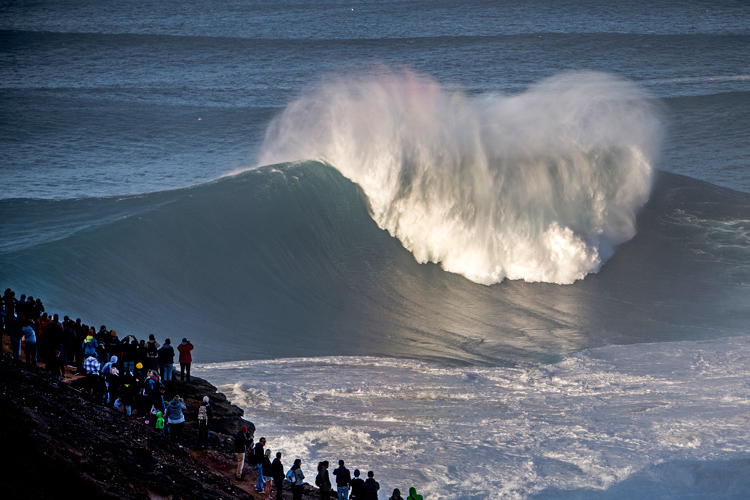
Home to several Guinness World Records - including the largest wave ever ridden and biggest wave ever surfed by a woman - Nazaré's Praia do Norte is a rare natural phenomenon.
Despite being a beach break, it is so powerful and heavy that some call it "the surfboard-breaking machine."
The big waves of Nazaré were first ridden by local bodyboarders and a few international athletes, including nine-time world bodyboarding champion Mike Stewart.
The highly disputed giants of Praia do Norte are the result of a combination of four variables: swell refraction, rapid depth reduction, converging waves produced by an underwater canyon, and a local water channel.
Jaws/Peahi | Maui, Hawaii
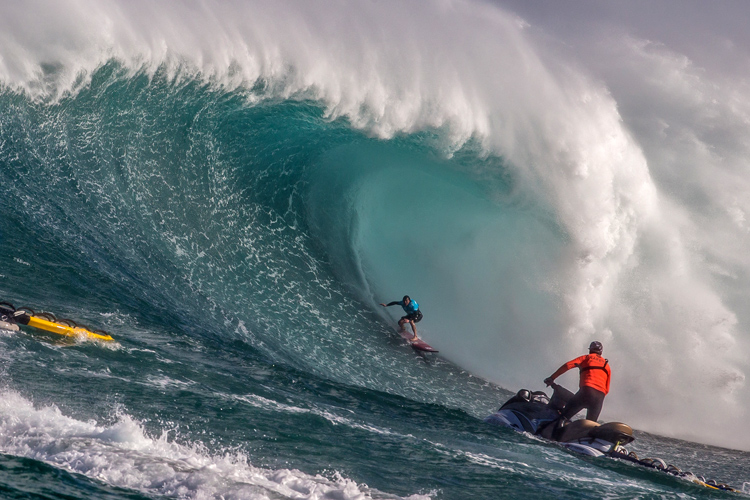
At Jaws, also known as Peahi, waves can easily reach between 30 and 80 feet. It is probably the fastest, heaviest, and largest wave in the Pacific Ocean.
The surf break became popular in the 1990s when Laird Hamilton decided to get towed into the wave by a jet ski using a surfboard equipped with footstraps.
The submerged reef break produces a barreling right-hander and occasionally delivers a few rideable yet dangerous left-handers.
Sometimes, this unpredictable beast closes out, resulting in broken boards and broken bones.
Teahupoo | Tahiti, French Polynesia
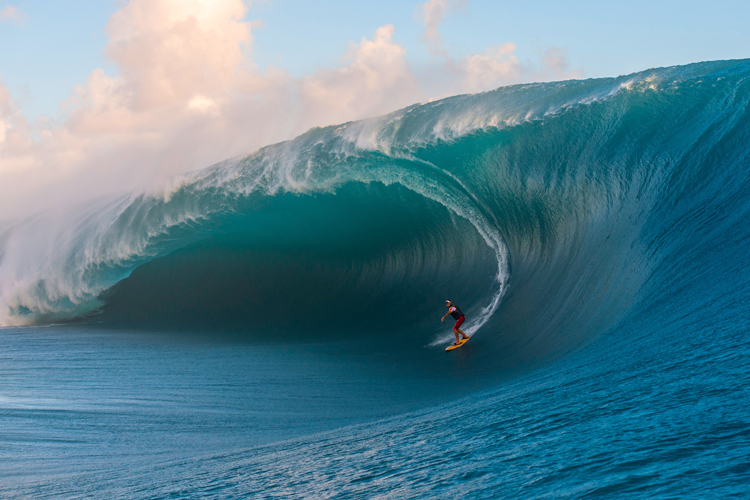
Teahupoo is one of the heaviest and deadliest waves in the world.
The infamous Tahitian surf break produces a super thick, hollow, and fast-moving barreling wave that breaks over a shallow and sharp reef.
The height of a Teahupoo wave face is between two and three times bigger than the wave's back.
The ultimate example of how this surf spot behaves is Laird Hamilton's Millennium Wave.
Teahupoo is a freak of nature that comes to life 500 yards off the southern coast of Tahiti and has already claimed the lives of several accomplished surfers.
Shipstern Bluff | Tasmania, Australia
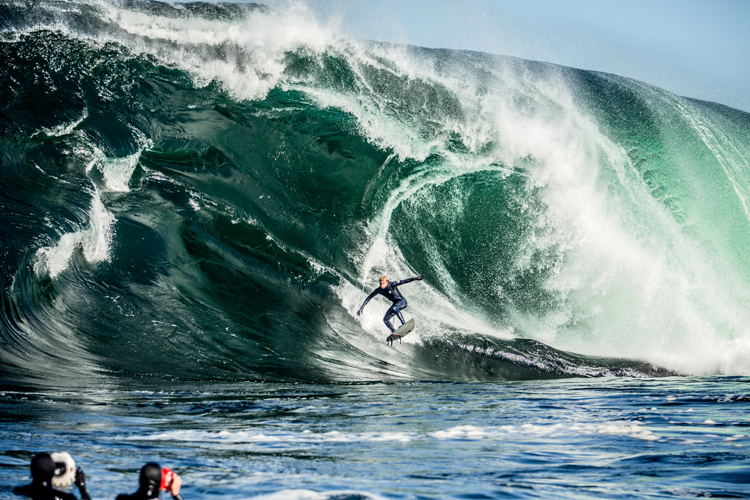
In the Tasman Sea, the name of this surf break speaks for itself.
At Shipstern Bluff, the chances of getting out of there alive on a big day are lower than the chances of riding wipeout-free monsters.
But what makes this surf break so dangerous and scary is definitely its famous "step."
Shipstern Bluff is a mutant wave that creates a wave within a wave due to the shape of the reef bottom. When steps emerge, surfers are forced to handle the jumps as a heavy and fast-breaking lip falls over.
Tasmania's most fearful surf spot can only be accessed by either a 30-kilometer jet ski, boat ride or a two-hour hike through the Tasman National Park.
Mavericks | Half Moon Bay, California
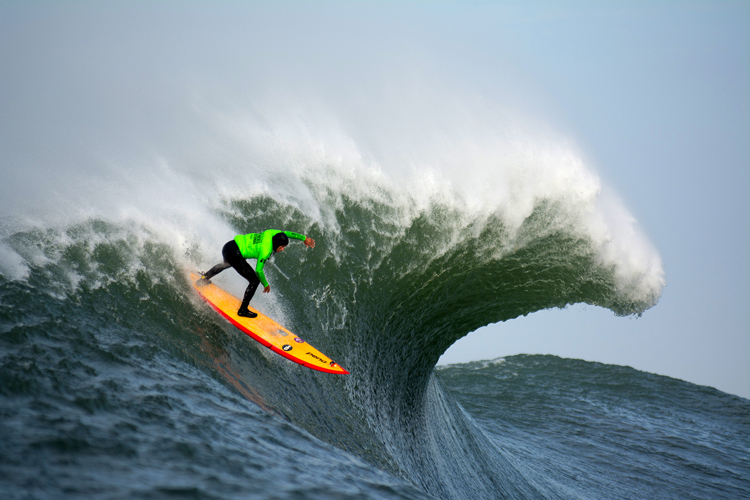
Mavericks is a brutal A-frame wave that breaks off Pillar Point in Half Moon Bay at Princeton-by-the-Sea in Northern California.
Mavs is one of the most popular big wave surf spots among heavy chargers because it challenges everyone's anxiety, fear, and confidence levels.
But there's more. California's liquid, life-and-bone breaker roars to life in cold and shark-infested waters.
With a thick lip and an inside section that can be tricky to negotiate, Mavericks has already claimed lives.
Mullaghmore Head | Donegal Bay, Ireland
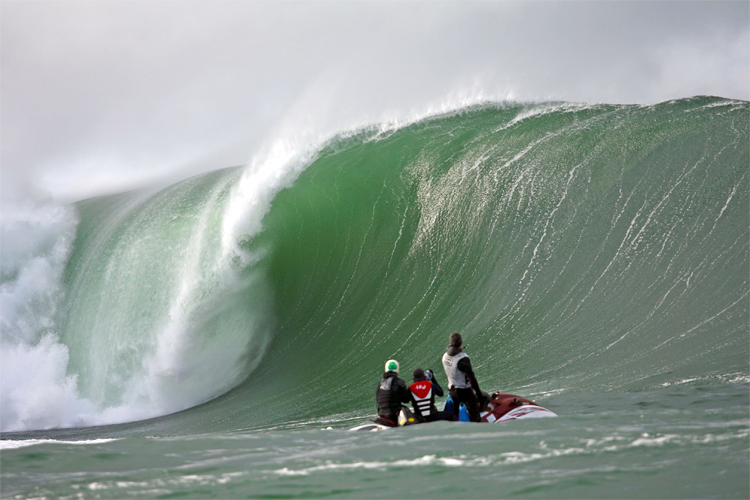
Mullaghmore is Ireland's premium big wave surf break and one of the most feared spots in Europe.
With a rainy and windy climate painting a dark picture, this wild, shallow, left-hand reef break can only be tamed on high tide.
The giant barreling waves break on a rocky bottom and come to life when the classic North Atlantic winter storms hit the Irish coastline.
Mullaghmore is a long and fast wave of consequence - surrounded by dangerous and strong currents - that breaks 100 meters off the local headland.
Belharra | La Côte Basque, France
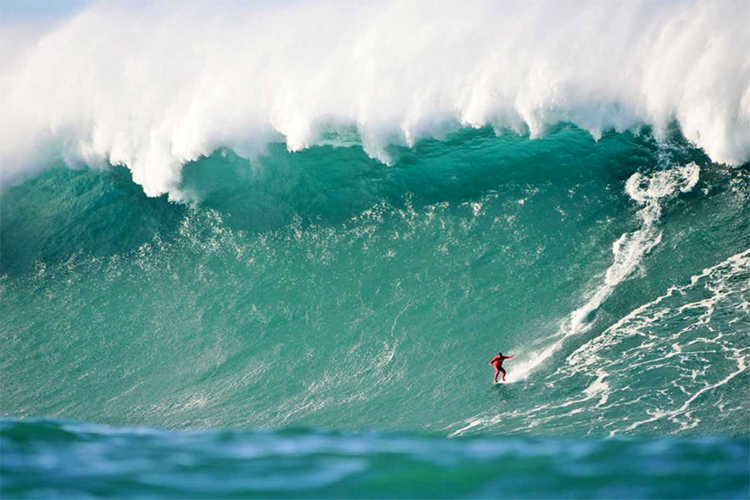
Belharra is an outer reef break located 2.5 kilometers northwest off the coast of the fishing town of Saint-Jean-de-Luz.
This gigantic A-frame wave breaks over a 15-meter deep, seagrass-covered shoal and can be surfed in low tide.
Although it only breaks a few times per decade, Belharra produces a massive and violent wave with a heavy lip.
Todos Santos/Killers | Baja California, Mexico
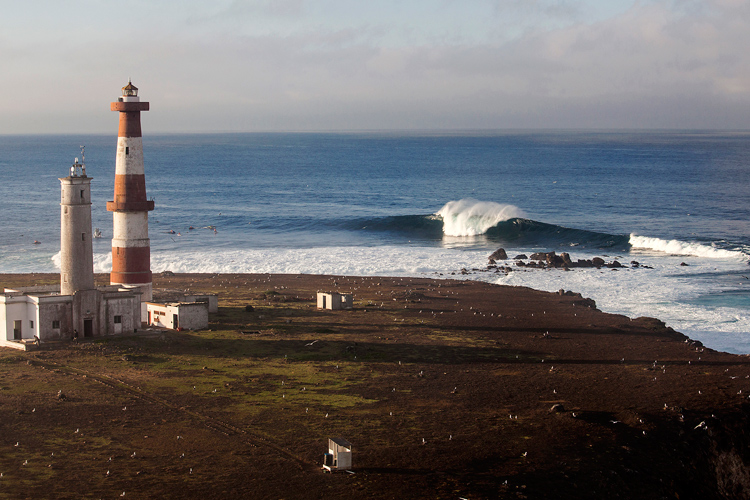
Todos Santos, also known as Killers, is a monstrous wave that breaks 11 miles off the coast of Ensenada in Isla Todos Santos.
The quintessential Mexican big wave surfing spot takes the most out of the local underwater canyon and creates a powerful, bumpy right-hand giant.
Todos Santos channels the ocean's raw power and the swells from the Pacific Northwest that travel toward the Baja peninsula.
The offshore point break produces the largest waves on the west coast of North America.
A deep water channel and great visibility from the nearby island help make it a big wave surfing paradise.
Todos Santos is a World Surfing Reserve since June 21, 2014.
Punta de Lobos | Pichilemu, Chile
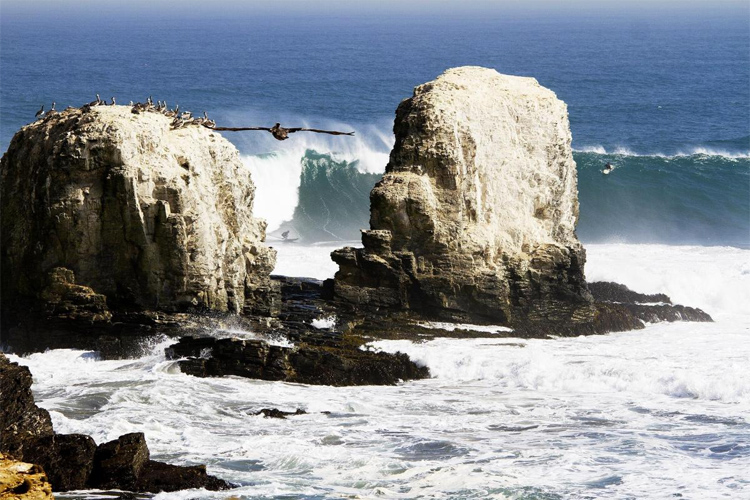
Punta de Lobos is a ferocious left-hand point break that comes to life in XXL mode with SW swells.
It detonates jaw-breaking waves near the iconic island rocks of Los Morros and offers several long, rideable sections that peel down the line for more than 800 yards.
This goofy footers' big wave heaven is one of the most consistent surf spots in the southern hemisphere, but the paddle-out is tricky and dangerous.
Punta de Lobos has been a World Surfing Reserve since November 16, 2018.
Dungeons | Cape Town, South Africa
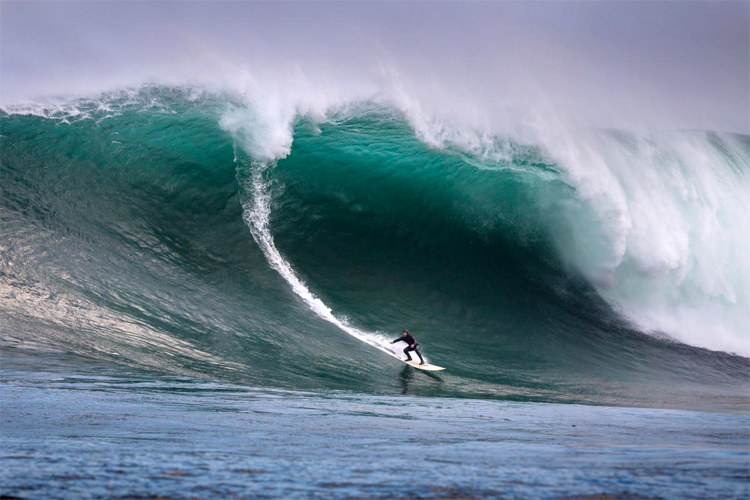
Located off Hout Bay, Dungeons is by far Africa's biggest wave.
Large swells born in the Roaring Forties move fast in deep water at around 30 miles per hour before suddenly hitting the local reef and creating a huge right-hand monster.
When it breaks in shark-infested waters, the South African beast doubles up and produces long walls of water that might close out unexpectedly.
A wipeout at Dungeons could drag a surfer 30 feet underwater.
Pico Alto | Punta Hermosa, Peru
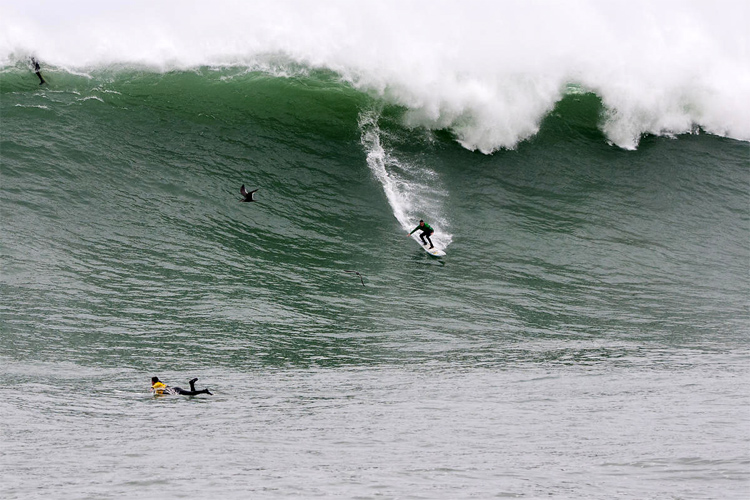
Pico Alto is considered the largest wave in South America.
The Peruvian offshore, big wave surf spot is located 1.5 kilometers out to sea, off the point at Playa Norte.
It breaks with Hawaiian power and proportions and challenges everything: fear, safety, and human lives.
Pico Alto is mainly a right-hand wave that offers an exceptionally long ride with a long, thunderous wall to those who are able to negotiate the exploding peak.
It requires a 30-minute paddle out just to get in position and is only rideable when the wave face is very clean and smooth.
This Peruvian liquid monster needs a robust 8-foot swell to feel the reef and unleash all its power.
Ghost Tree | Pescadero Point, California
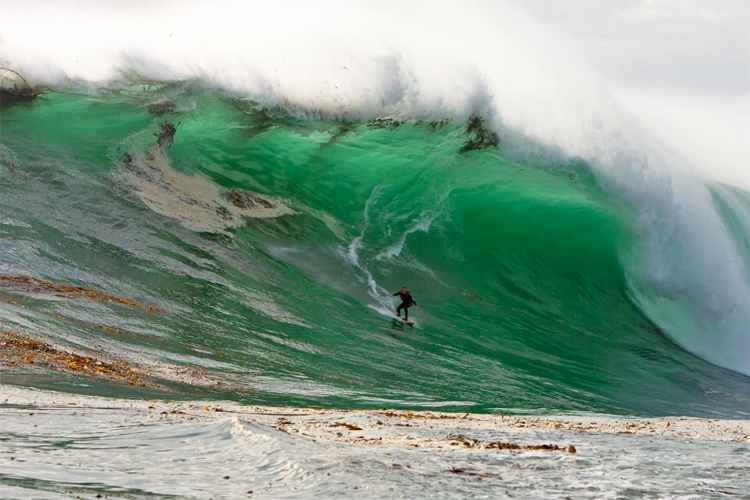
Ghost Tree is a surf spot located in Central California, off the cliffs of Pescadero Point.
It's one of the biggest waves on the California coast and breaks just outside the 18th hole of the world-famous Pebble Beach Golf Course.
The powerful and long right-hand wave owes its name to the bone-white trunks of the gnarled cypress trees seen from the line-up.
It roars to life with strong west swells.
The first surfers to ride Ghost Tree were Peter Mel and Adam Repogle. They were towed into the kelp-infested waters by jet skis.
It's an extremely dangerous wave because it breaks close to the nearby rocks, but also because it features a sudden step, similar to Shipstern Bluff.
On December 4, 2007, the death of accomplished big wave surfer and fisherman Peter Davi overshadowed the spot's reputation.
Soon after, the National Oceanic and Atmospheric Administration (NOAA) put an end to motorized personal watercraft in the area.
Cortes Bank | San Diego, California
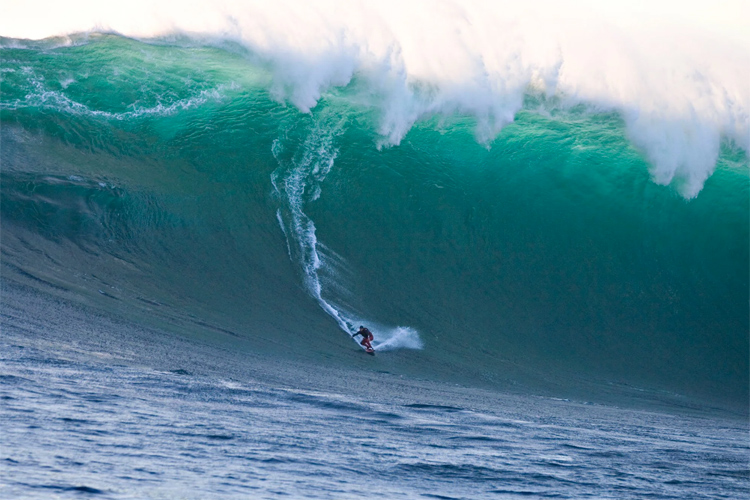
Cortes Bank is a reef break located 110 miles west off the coast of San Diego. In the past, depending on sea-level rise and fall, it has been an island.
The spot features an underwater seamount that rises to within six feet of the surface and has a 360-degree exposition to all wind, currents, and tides.
In 1985, the USS Enterprise collided with Cortes Bank, suffering a 40-foot gash and a damaged propeller.
There was an attempt to surf it in the 1990s, but the first session took place on January 19, 2001, during "Storm 15."
Six surfers participated in the historical moment - Ken Collins, Peter Mel, Mike Parsons, Brad Gerlach, Evan Slater, and John Walla.
Gerlach towed Parsons into a perfect and clean 66-foot wave, which ended up winning the XXL Award and setting two Guinness World Records that year.
Despite being located out at sea, Cortes Bank can get crowded during large swell events.
Discover the 10 commandments of the big wave surfer.
